The start of the school year saw the introduction of new statutory guidance for schools in relation to recording and managing attendance (and absence).
Briefly, this saw the introduction of some new absence codes for use in schools’ registers and changes to definition of some existing codes. We’ll unpack these as we go along.
Data
We use data for September 2023 and September 2024 collected from around 9,000 schools subscribing to FFT Attendance Tracker.
Attendance
Code “/” is used to denote a pupil is present in the morning and code “\” in the afternoon.
There was a slight increase in the percentage of sessions marked present in 2024, up from 94.1% to 94.2% in primary and from 89.7% to 90.0% in secondary.
In addition, there are other codes which count as attendance. These are shown for 2024 in the following chart.
Combined these additional codes pushed up attendance in primary schools by 1.4 percentage points (to 95.6%) and in secondary schools by 3.2 percentage points (to 93.2%).
Code K was introduced for 2024/25. This is used when a pupil is attending education provision arranged by the local authority. This code was rarely used in September. 0.01% of primary sessions and 0.05% of secondary sessions were marked as K.
By far the most common of these codes is L: Late before registers closed. The guidance on the use of this code was tightened this year, with a 30 minute limit on keeping registers open imposed.
Code B (education off-site) rules were also tightened, with emphasis being placed on activities being supervised by a suitably qualified individual.
We can compare data for 2023 and 2024 for codes L and B.
Overall, there has been little change so far in registration sessions coded L, but there has been a notable decrease in the use of code B. ASCL highlight that DfE have made clear that remote learning should be counted as absence rather than code B and this could be a factor in the fall in prevalence between 2023 and 2024.
Authorised absence
Next let’s turn to absence codes classified as authorised absence.
Illness remains the most likely reason for absence, accounting for 2% of registration sessions among primary-aged pupils and almost 3% among secondary-aged pupils.
The second most common authorized absence code (C: leave of absence) has now been split into three categories. C1 is for participating in a regulated performance or working abroad and C2 is for a part-time timetable. Code C remains for other forms of leave of absence in exceptional circumstances.
According to the DfE guidance, C2 only applies to pupils who are not in full-time education for a temporary period. The code is not supposed to be used for pupils in full-time education but only attending a school part-time (e.g. flexi-schooling).
Nonetheless, 0.08% of sessions for primary-aged pupils and 0.15% of sessions for secondary-aged pupils were marked C2.
We find that 0.3% of primary-aged and 0.7% of secondary-aged pupils were marked as absent coded C2 for at least 1 session in September 2024. This would gross up to around 11,000 primary-aged pupils and 21,000 secondary-aged pupils.
J1 is another new code, which denotes leave of absence to attend an interview for employment or for admission to another school. This replaces the former code J although this was classified as attending for statistical purposes.
Unauthorised absence
For completeness, we show prevalence of the four unauthorized absence codes.
There have been no changes to these codes, although the new guidance underlines that code U (or another appropriate absence code) should be used if a pupil arrives more than 30 minutes after registration.
Overall, 1.8% of sessions were missed due to unauthorized absence among primary-aged pupils and 2.9% among secondary-aged pupils. These figures were similar in size to absences due to illness.
Codes that do not count in absence statistics
Some absence codes are ignored in the calculation of absence statistics. These include code D for pupils who are dual registered and who are expected to be attending another school and code # for a planned school closure.
A new code, Q, has been added this year for when pupils cannot attend due a lack of access arrangements.
In addition, the previous Y code (unable to attend due to exceptional circumstances) has been split into 7 further sub-categories.
Y1 Unable to attend due to transport normally provided not being available
Y2 Unable to attend due to widespread disruption to travel
Y3 Unable to attend due to part of the school premises being closed
Y4 Unable to attend due to the whole school site being unexpectedly closed
Y5 Unable to attend as pupil is in criminal justice detention
Y6 Unable to attend in accordance with public health guidance or law
Y7 Unable to attend because of any other unavoidable cause
These codes are rarely used with the exception of Y7 (used as a catch-all if codes Y1-Y6 are unsuitable). Y7 accounted for 0.86% of sessions[1]. However, 95% of Y7 codes were in the first week of term, indicating staggered starts so these figures should not raise alarm.
Schools are required to record a note of the nature of the circumstances when Y7 is used. However, we do not collect these notes.
Absence codes and SEN Status
Finally, we examine how pupil absences vary by SEN status. In the following table, we include attendances, authorized absences, unauthorised absences and sessions that pupils were unable to attend (Q and Y codes). As a result, these attendance figures are slightly lower than they should be due to the inclusion of the Q and Y codes.
Pupils with EHC plans are less likely to be present in school than other pupils. We can see here that they are more likely to be educated off-site (code B) or in local authority alternative provision (code K). They are also more likely to be absent due to leave of absence (code C), a part-time timetable (code C2), and illness (code I). They are also more likely not to be able to attend due to a lack of access arrangements (code Q) and because transport was not available (Y1) although the absolute risk of these events is low.
Summing up
It will probably take a little while for the changes to absence recording to fully bed in.
What we have seen so far is that there has been less use of code B (off-site education).
Finally, we now have some data on the number of pupils on part-time timetables. Given the data we have collected so far, we estimate around 11,000 primary-aged pupils and 21,000 secondary-aged pupils accessed a part-time timetable in September. However, these figures do not include pupils with flexi-schooling arrangements.
Want to stay up-to-date with the latest research from FFT Education Datalab? Sign up to Datalab’s mailing list to get notifications about new blogposts, or to receive the team’s half-termly newsletter.
- The denominator for this calculation includes all codes classified as attending, authorized absence, unauthorized absence, plus the Q and Y codes.




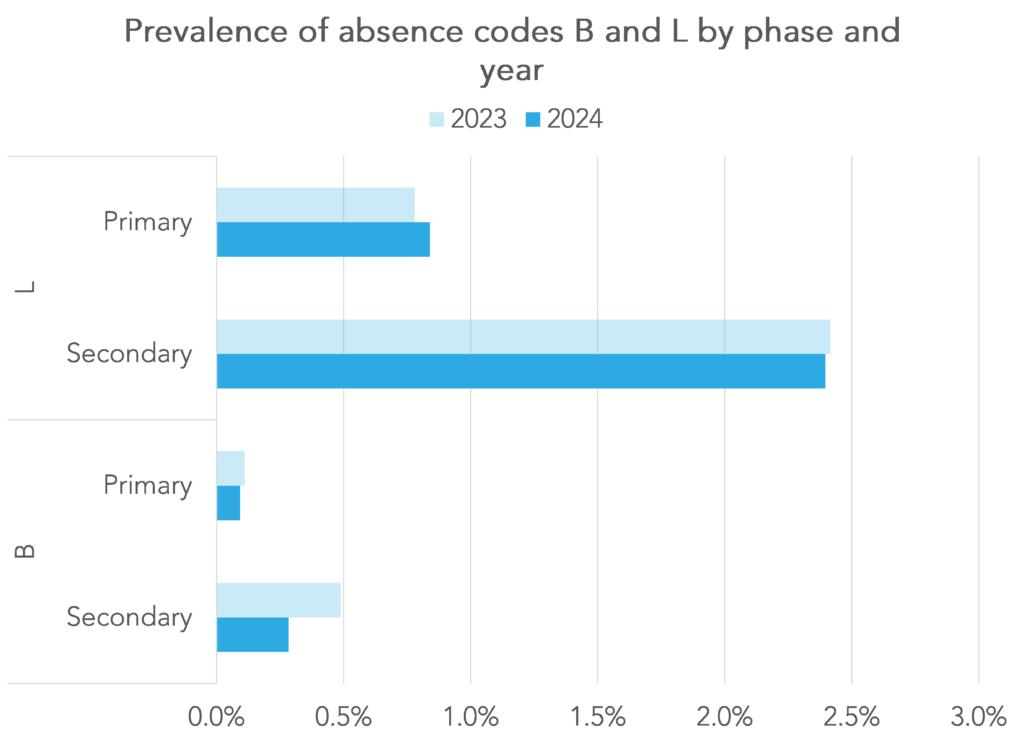
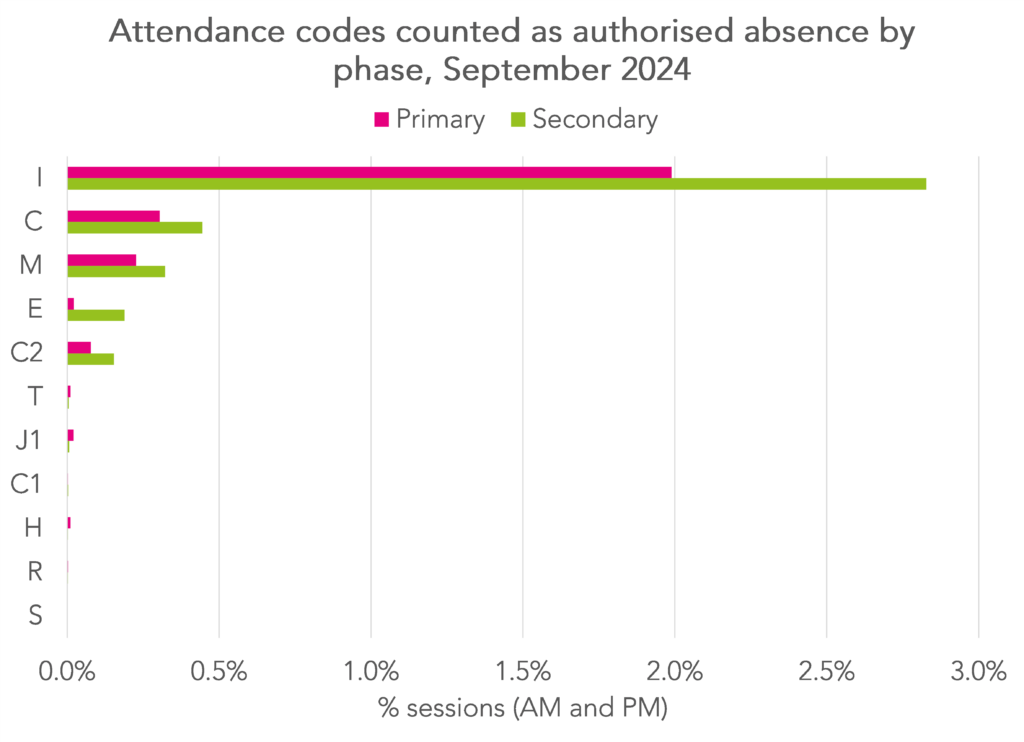
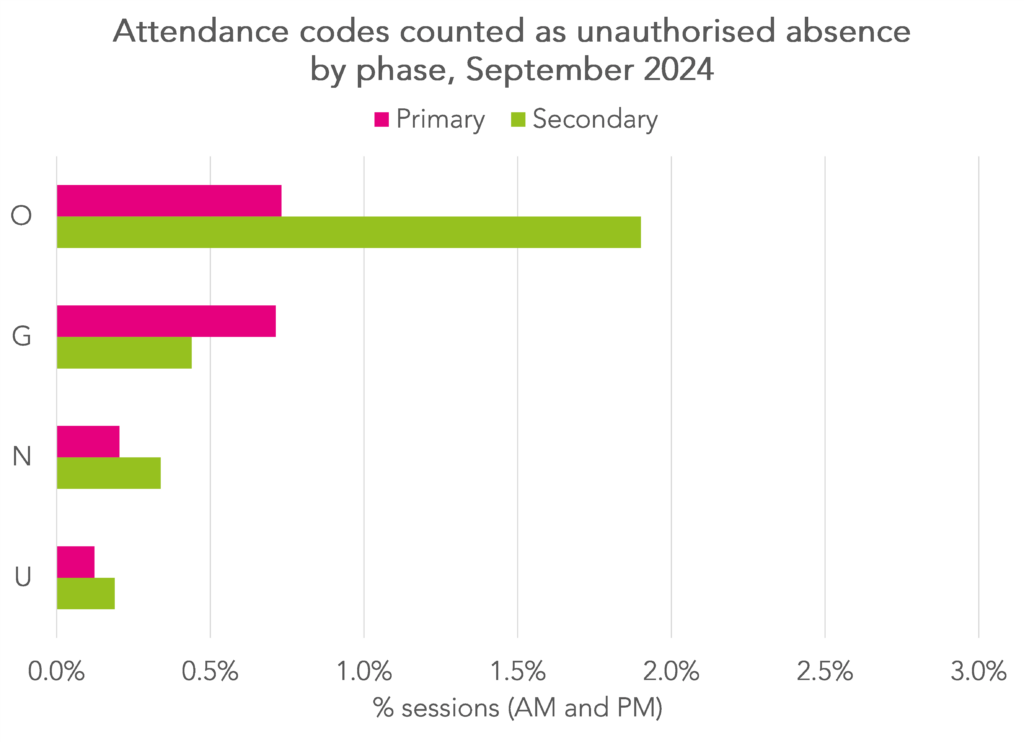
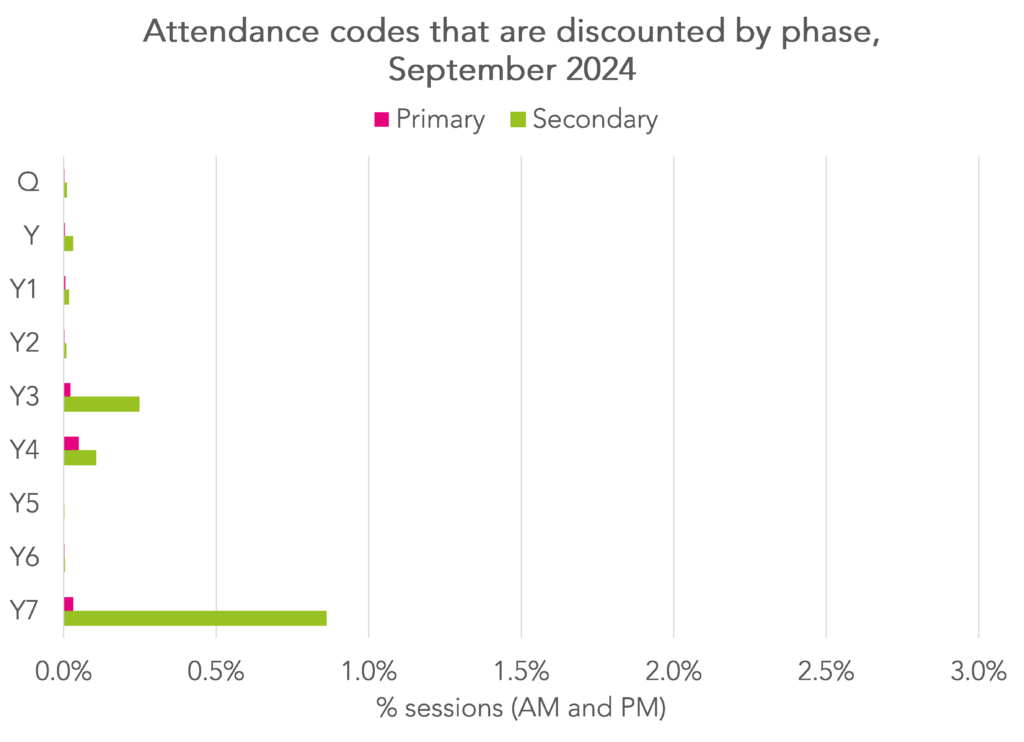

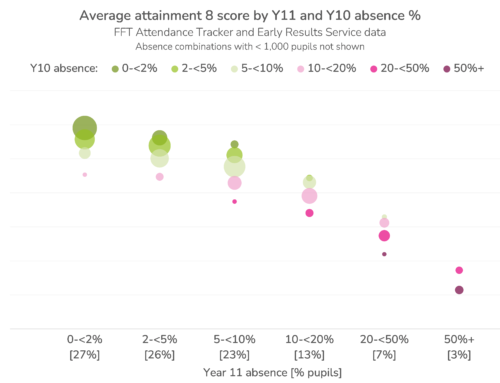
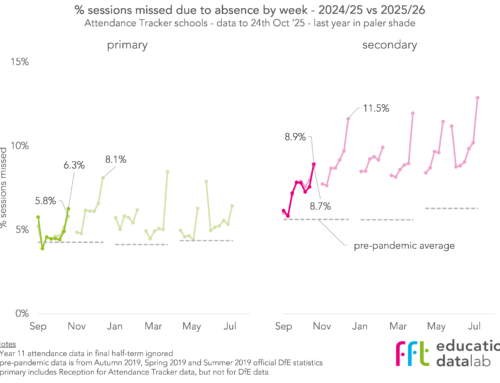
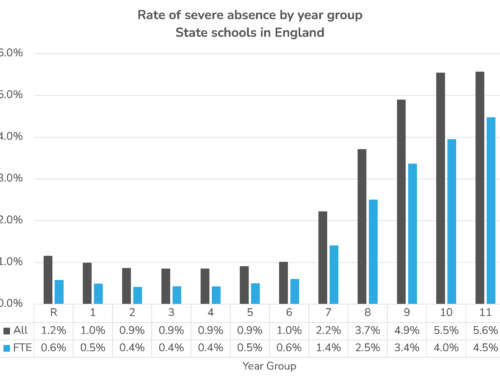
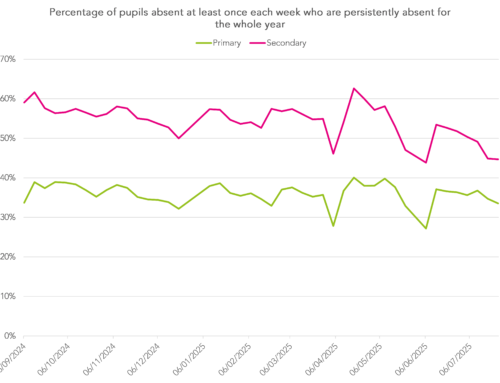
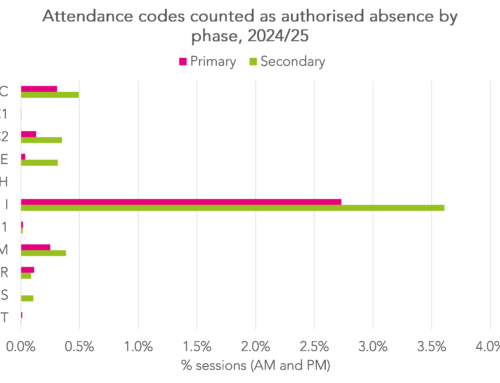
Leave A Comment